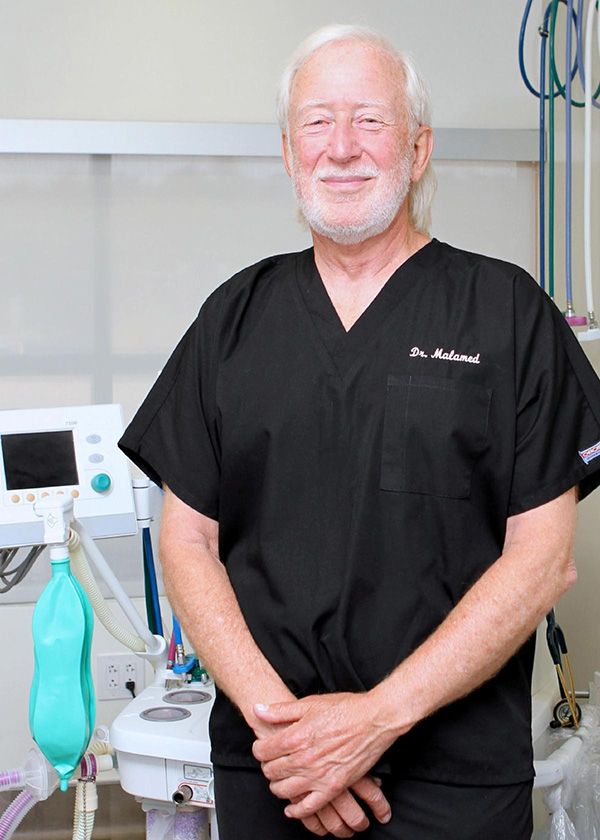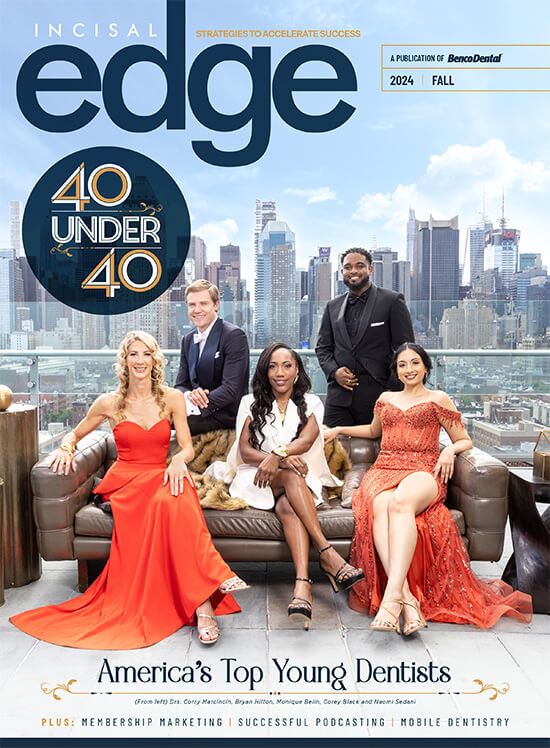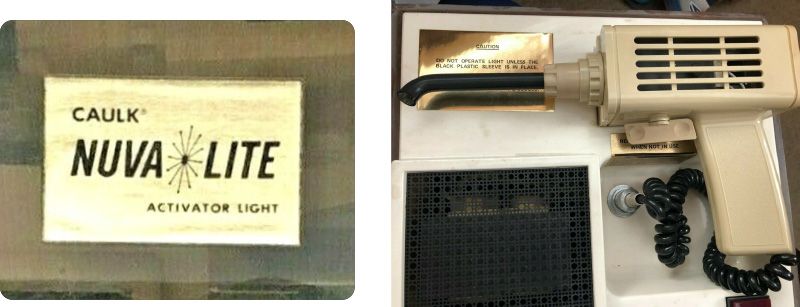Incisal Edge is proud to welcome two new inductees to this celebrated group for 2023.
DR. STANLEY F. MALAMED
Pioneering anesthesia educator, researcher and author

When he started dental school in 1965, however, he imagined a different path. Born and raised in the Bronx, Dr. Malamed attended the New York University College of Dentistry, graduating in 1969. That same year, he began a dental internship at Montefiore Medical Center in the Bronx, where he first discovered the passion that would change his life. “Part of the internship was a month in the operating room doing general anesthesia,” he recalls, “and quite honestly, I fell in love.” Such was his ardor that he decided to complete a residency in the specialty, also at Montefiore, after which he served from 1971 to 1973 in the U.S. Army Dental Corps in Fort Knox, Kentucky.
He had intended to return to Montefiore to work as a full-time anesthesiologist, but once again his career took a turn. One day in 1973, he received a phone call from the University of Southern California about teaching students the use of nitrous oxide. “I had never given any thought to becoming a teacher,” he says, but the offer intrigued him. He and his family—wife Beverly and what eventually became three children—would, he decided, spend two years in California. Five decades later, he’s still there. He was with USC’s Ostrow School of Dentistry from his arrival until 2013, when he retired; today he’s an emeritus professor of dentistry there.
He has long been active in anesthesia research. He played a pivotal role in bringing articaine—commonly used in Europe—to the United States in 2000. “My name is the first author on all the research and studies that were published to get articaine on the market,” he says. “I’m proud of that.” Today he continues to lecture on dental anesthesia and advocates for advances within the specialty. “I’m excited that I’m still relevant. I retired from teaching 10 years ago, and I’m still invited all over the world to give lectures.”
He has no regrets. “Little things happened along the way that led me to where I am, and I’m forever grateful, because I love what I’m doing,” he says. “I have enjoyed every second of my career.” —Carrie Pallardy
OTTO E. LIENHARD
Pioneer of the UV curing light
IT’S A CHICKEN-and-egg scenario: You can’t have light-cured materials without a light to cure them. Dentsply (then called L.D. Caulk, or simply Caulk) is widely known for introducing the Nuva System, consisting of Nuva Seal and the accompanying Nuva Lite. According to the company, Nuva Seal (50% Bis-GMA, 50% MMA) was developed with Dr. Michael G. Buonocore, who passed away in 1981. Buonocore is known and lauded to this day for his work as chairman of the department of dental materials at the Eastman Dental Center in Rochester, New York, and as a professor at the School of Medicine and Dentistry at the University of Rochester.
But who invented the Nuva Lite itself? A patent reveals some additional detail, but we have Dentsply Sirona to thank for graciously making sense of the story. Nuva Lite, Dentsply told us, was developed in collaboration with Hanovia manufacturing in 1969 and introduced in 1971. It uses a mercury vapor lamp and has two filters, one quartz, with an output ranging around 330-410nm transmitted through a quartz rod.
The inventor? Otto E. Lienhard of Upper Montclair, New Jersey. The patent was assigned to Canrad Precision Industries, filed on March 15, 1971, and granted January 23, 1973. (Hanovia was a division of Canrad; it manufactured the Nuva Lite for L.D. Caulk, which became a part of Dentsply in the early 1960s.) More detail came from the owner of the antique Nuva Lite pictured above. Dr. Brandon Mitchell of West Virginia, a thirtysomething dental history enthusiast and collector, says Lienhard was born in 1915 in Switzerland, married, had five children and moved to the U.S. in 1956. Unsurprisingly given his work, he was listed as a physicist in the 1957 census.
Lienhard died on December 13, 1978, leaving a legacy that includes several inventions related to light technology. Dr. Mitchell’s original (and still working, we might add) Nuva Lite will soon take up residence in our dental history museum at Benco Dental headquarters, just as Otto E. Leinhard joins our Dental Innovator Hall of Fame. Not a moment too soon, as his achievement was perilously close to being lost to history. —Edward Kobesky
PREVIOUS INDUCTEES
2022: Dr. Edward F. Rossomando, Dr. John A. Molinari 2021: Richard Saslow, Anne Eiting Klamar 2019: Esther Wilkins 2018: Dr. Francis Mouyen 2017: Dr. Rafael Bowen, David Schick 2016: Dr. Richard Pelton, Ernest Crane, Gordon J. Christensen 2015: Dr. Robert Meyer, Lucy Hobbs 2014: Dr. Jack Dillenberg, Dr. Howard Farran 2013: Dr. William B. Dragan, Dr. John V. Borden 2012: Dr. Joshua Friedman, Jim Glidewell




